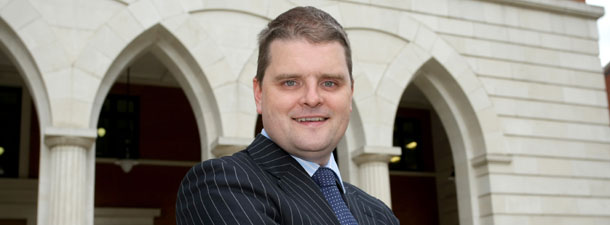With the equity markets unsteady and gilts trading at low levels, GVA reports that in terms of the commercial property market, there will continue to be a flight to quality and a resultant widening of the yield spread between prime and secondary properties.
Demand is outstripping the limited supply of prime assets, with owners of prime properties holding, not wanting to sell, and the banks having already traded a good portion of their prime asset security. This is ensuring yields for prime property are holding value or hardening. Meanwhile, secondary assets will continue to suffer.
Damian Lloyd, director in GVA’s Birmingham-based Investment team comments: “In the West Midlands office market, prime take-up has been holding up well, while secondary take-up has fallen significantly. Restricted bank lending to corporate customers, public spending cuts, a rise in taxes and low wage increases are likely to result in well below trend economic growth this year and next, combined with weak occupier demand – particularly for secondary property – for at least two years.
“Certainly there will be an oversupply of secondary property across almost all parts of the market in the short and medium term. This will be exacerbated by the pending expiry of 25-year leases on potentially obsolete buildings dating from the late 1980s’ development boom, as well as the public sector’s likely disposal of many secondary properties.
“Holding costs for investors have never been higher with new business rate legislation, utilities costs driving service charges, and capital expenditure obligations and obsolescence. Yet there are ways of mitigating these, depending on circumstance.
“Banks are understandably increasingly reluctant to lend to this sector of the market. Why should they when they have limited funds to deploy and the pick of the market to lend to, before we even consider pending refinancing. There is, however, plenty of equity allocated for investment into this sector. But it comes at a cost, and without the accompaniment of bank lending, pricing for secondary assets is being driven down accordingly.
“With the hardening of pricing for prime assets and restricted supply, investors will have to widen their investment criteria to get their money into the market, to the benefit of secondary property. There has also been a re-adjustment of the returns required, or strengthening of the business plans written, by a number of secondary buyers. The result has been increased activity in this area – which we are experiencing first hand.”
2/…
Damian Lloyd continues: “The big question remains, what will happen to the supply of secondary property investments in the market? The volume of distressed loans with secondary property as security with the main UK balance sheet lenders, CMBS and NAMA is over four years’ supply on current transaction volumes. It is currently a controlled exit but this could change, which would have knock-on effects.
“So what do you do if you were holding or lending on such assets when the market turned? And what are the opportunities for new investment, in a market where prime property is fast disappearing? Sitting and waiting cannot work, as secondary property, by its nature, requires a hands-on approach to avoid further value erosion. When was the last time the property and surrounding area was inspected, tenants engaged with, their thoughts canvassed and the local Planning office visited? Are target leasing terms realistic and are outgoings being monitored – are dilapidations being followed through?
“There are growth areas within the market, including affordable housing, budget hotels and student housing. This is by no means a fix for all, but property’s heterogeneous nature offers opportunity. What is clear from the prime secondary spread is, if you can take a secondary asset and enhance its physical and leasing profile to make it appealing to investors, with a cheaper cost of capital, you create value.
“With regard to financing options, there is no shortage of equity, however at the levels of return required there is a significant funding gap, with the availability of senior debt worsening. However, the market is responding, with a growth market of providers looking to capitalise on the gap between senior debt and equity, which offers a more attractive risk/return profile to some investors. And, the institutional market could further fill the funding gap as prime values increase and supply reduces.
“So it seems that, as the markets readjust, secondary property certainly offers opportunities for the creative and proactive.”



















